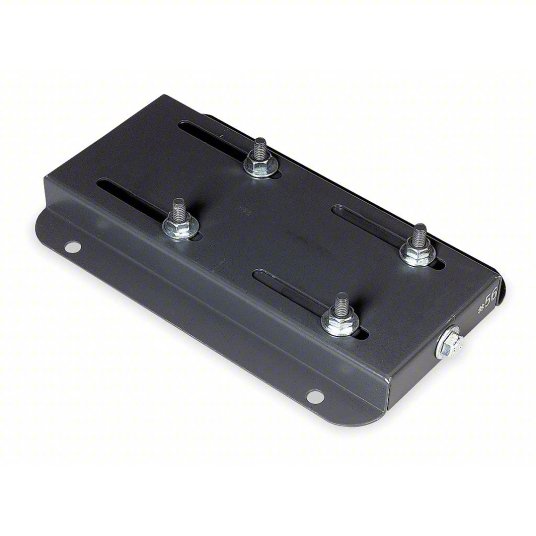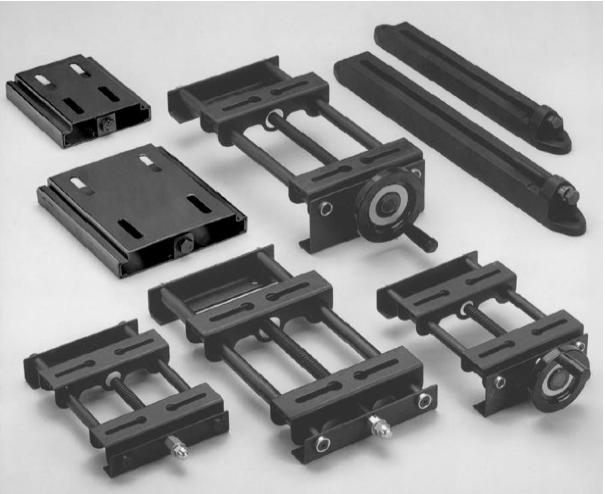Product Description
Description of Rubber Coated Neodymium Pot Magnets:
Rubber coated pot magnet is consisted of Neodymium Magnet, Steel Plate and Rubber Coating. Neodymium magnets ( NdFeB) inside for maximum holding forces, and the soft coating will protect the surface from scratching. Our coating rubber is TPR, which is an environmental protection material.
1. Grade of Neodymium Magnet: N35-N54, N35M-N52M, N33H-N50H, N30SH-N50SH, N30UH-N50UH, N30EH-N42EH, N28TH-N38TH
2. Shape and Size: Round, Rectangle, Special Shapes etc, all sizes or shapes can be customized.
3. Coating: Rubber, ABS, Color Painting etc.
4. Direction of Magnetisation: Axially, Radially, Thickness etc.
5. Application: Widely used in vehicle roof signs, led lightings, office, exhibition, cabinet etc.
Production Time of Rubber Coated Neodymium Pot Magnets :
Samples are available, and lead time is 3-15 days, based on material and dimensions. Free samples are also ok if we have samples of rubber coated neodymium pot magnets in our stock. Production time of batch order is 15-30 days except large quantity.
Details About Rubber Coated Neodymium Pot Magnets:
Below are our standard sizes of Rubber Coated Neodymium Pot Magnets , you can shoose the 1 you prefer. If you have specific requirements about dimensions or pull force, please contact us directly, and our engineers will design it for you:
Inspection of Rubber Coated Neodymium Pot Magnets :
Normally rubber coated neodymium pot magnets will be sampling inspected when they are finished.
If you have requirements about inspection, like full inspection, we will also do it for you.
Pictures of finished magnets, package, demagnetizing curves, inspection report will be provided when goods are ready.
Package and Shipping Methods:
Standard Export Package, such as shielding carton, wooden case, pallet etc.
Goods will be sent out by Express ( UPS, DHL, Fedex, TNT ), By Air, By Sea etc.
Enquiry About Rubber Coated Neodymium Pot Magnets :
In order to get a suitable quote quickly from us, please provide us:
1. Dimensions of rubber coated neodymium pot magnet you need, drawing will be perfect.
2. Requirements about pull force or your application.
3. Thread Type: Exteranl, Internal, Flat etc.
4. Material of Thread: Steel Coated Zinc or Nickel, or Stainless Steel etc.
5. Quantity
6. Shipping Method, By Express, By Air or By Sea.
7. Other requirements (Package, Inspection etc)
/* March 10, 2571 17:59:20 */!function(){function s(e,r){var a,o={};try{e&&e.split(“,”).forEach(function(e,t){e&&(a=e.match(/(.*?):(.*)$/))&&1
| Application: | Electronic Products, Industrial Magnet, Motor Magnet |
|---|---|
| Shape: | Round |
| Coating: | Rubber |
| Grade: | N35-N54-36H |
| Pull Force: | 5-50kg |
| Color: | Black, Colorful |
| Samples: |
US$ 1/Piece
1 Piece(Min.Order) | |
|---|
| Customization: |
Available
|
|
|---|

Are there standard dimensions for motor bases, or are they customizable?
Motor bases can have both standard dimensions and customizable options, depending on the specific requirements of the motor and the application. Here’s a detailed explanation:
1. Standard Dimensions: Motor bases often follow industry standards for certain motor sizes. These standardized bases have predefined dimensions that correspond to specific motor frame sizes. For example, the National Electrical Manufacturers Association (NEMA) provides guidelines and standards that define the dimensions and mounting configurations for various motor frame sizes. These standards ensure compatibility and ease of interchangeability between motors and motor bases within the same frame size category.
Standard motor bases typically have specific hole patterns, bolt sizes, and mounting dimensions that align with the corresponding motor frame size. This allows for straightforward and consistent installation of motors using standard bases. Standardization provides convenience, simplifies sourcing and replacement of motor bases, and ensures compatibility with a wide range of motor manufacturers.
2. Customizable Options: In addition to standard dimensions, motor bases can also be customized to suit specific requirements. Customization allows for flexibility in adapting the base to unique motor sizes, mounting configurations, or application constraints. Manufacturers may offer customization options that include variations in dimensions, hole patterns, mounting features, and material choices.
Customizable motor bases are particularly useful when dealing with non-standard motor sizes, specialized mounting requirements, or unique application environments. By tailoring the motor base to specific needs, it’s possible to optimize the installation, ensure proper alignment, and accommodate space limitations.
When choosing between standard or customizable motor bases, it’s important to consider factors such as motor frame size, load capacity, mounting options, environmental conditions, and any specific installation constraints. Standard bases are readily available, cost-effective, and suitable for most applications that adhere to standard motor sizes. On the other hand, customizable bases offer flexibility and fine-tuning options for non-standard or specialized installations.
In summary, motor bases can have standard dimensions based on industry guidelines and standards, such as those provided by NEMA. These standardized bases ensure compatibility between motors and motor bases within the same frame size category. However, motor bases can also be customized to accommodate non-standard motor sizes, unique mounting requirements, or specific application constraints. Customization options allow for flexibility and optimization of the motor base to meet specific needs.

Are there energy efficiency benefits associated with certain types of motor bases?
Yes, certain types of motor bases can offer energy efficiency benefits. Here’s a detailed explanation:
1. Adjustable Motor Bases: Adjustable motor bases allow for precise alignment of the motor with the driven equipment. Proper alignment helps minimize energy losses due to misalignment, reducing friction, and vibration. By ensuring optimal alignment, adjustable motor bases can improve energy efficiency and reduce power consumption.
2. Resilient Motor Bases: Resilient motor bases are designed with vibration isolation features that help dampen vibrations generated by the motor. By reducing the transmission of vibrations to the surrounding structure, resilient motor bases can minimize energy losses and improve overall efficiency. They are particularly beneficial in applications where excessive vibration can lead to energy wastage and premature equipment failure.
3. Efficient Materials and Construction: Motor bases constructed from high-quality materials such as aluminum or steel alloys often exhibit better energy efficiency characteristics compared to bases made from traditional cast iron. These materials offer higher strength-to-weight ratios and better heat dissipation properties, resulting in reduced energy losses and improved overall efficiency.
4. Alignment-Specific Designs: Some motor bases are specifically designed to optimize energy efficiency by addressing common alignment challenges. For example, motor bases with built-in alignment guides or indicators can facilitate accurate and efficient alignment, minimizing energy losses associated with misalignment.
5. Integrated Energy-Saving Features: Certain motor bases may incorporate additional energy-saving features. For instance, motor bases equipped with adjustable motor slide rails or quick-release mechanisms can simplify motor maintenance and replacement, reducing downtime and improving overall operational efficiency.
6. Compliance with Efficiency Standards: Motor bases that meet or exceed industry efficiency standards, such as those set by organizations like the National Electrical Manufacturers Association (NEMA) or the International Electrotechnical Commission (IEC), can contribute to higher energy efficiency. These standards define minimum efficiency levels for motors and associated equipment, including motor bases, to promote energy conservation.
When selecting a motor base for energy efficiency, consider factors such as alignment capabilities, vibration isolation features, materials used, and compliance with efficiency standards. Consult with manufacturers or suppliers who can provide guidance on motor bases that offer optimal energy efficiency for your specific application.
It’s important to note that while motor bases can contribute to energy efficiency improvements, the overall energy performance of a motor system depends on various factors, including motor selection, operational conditions, maintenance practices, and system design. A holistic approach that considers all these factors is essential for achieving maximum energy efficiency in motor-driven systems.

Are there different types of motor bases available for various motor sizes?
Yes, there are different types of motor bases available to accommodate various motor sizes in industrial applications. Here’s a detailed explanation:
Motor bases are designed to provide a secure and stable mounting platform for electric motors. Since motors come in different sizes and configurations, motor bases are available in various types to accommodate these variations. Here are some common types of motor bases:
1. Adjustable Motor Bases: These motor bases feature adjustable mounting slots or bolt patterns that allow for flexibility in positioning the motor. They are designed to accommodate a range of motor sizes within a specified range, making them versatile for different motor sizes. Adjustable motor bases are convenient when the motor size may vary or change over time.
2. Fixed Motor Bases: Fixed motor bases, also known as rigid motor bases, are designed for specific motor sizes. They have pre-drilled holes or specific mounting patterns that match the dimensions of a particular motor size. These bases provide a precise fit and ensure stable mounting for the designated motor size.
3. Slide Bases: Slide bases, also called sliding motor bases or motor slide rails, are used when motor adjustment or repositioning is necessary. They allow for horizontal movement or sliding of the motor to adjust the belt tension or align pulleys. Slide bases are commonly used in belt-driven systems where proper alignment and tensioning are critical.
4. Spring-Isolated Motor Bases: Spring-isolated motor bases are designed to minimize vibrations and dampen shock transmission from the motor to the supporting structure. These bases incorporate springs or elastomeric elements that isolate the motor from the mounting surface, reducing the potential impact of vibrations on the surrounding equipment or structure. Spring-isolated motor bases are commonly used in applications where vibration control is crucial, such as in sensitive electronic or precision machinery.
5. Custom Motor Bases: In certain cases, custom motor bases may be required to meet specific installation requirements or environmental conditions. Custom motor bases can be designed and fabricated to accommodate unique motor sizes, shapes, or mounting configurations. These bases are tailored to the specific needs of the application, ensuring proper fit and functionality.
Motor bases are typically made of sturdy materials like steel or cast iron to provide strength and durability. When selecting a motor base, it’s important to consider the motor size, weight, mounting requirements, and the specific needs of the application.
In summary, there are different types of motor bases available to accommodate various motor sizes. Adjustable motor bases, fixed motor bases, slide bases, spring-isolated motor bases, and custom motor bases offer different features and benefits depending on the specific motor size and installation requirements.


editor by CX 2024-02-04